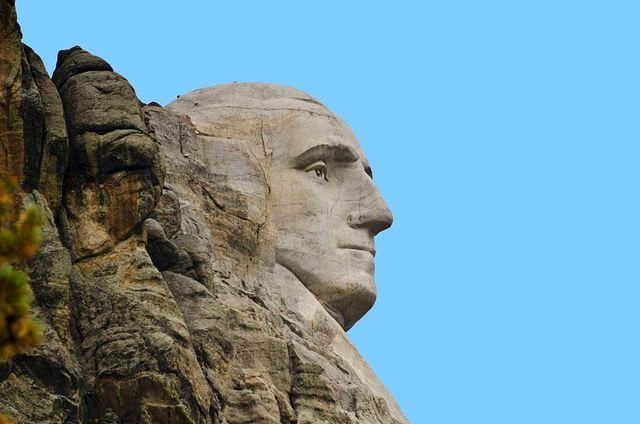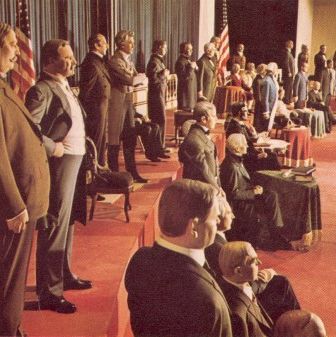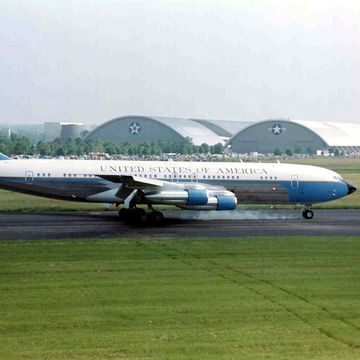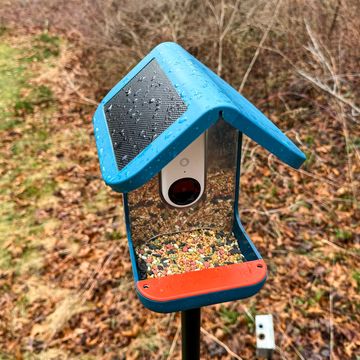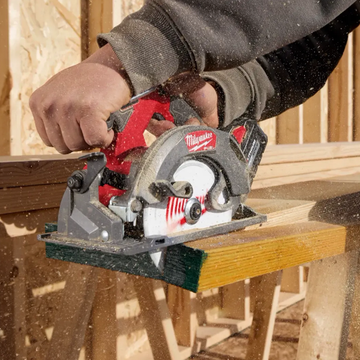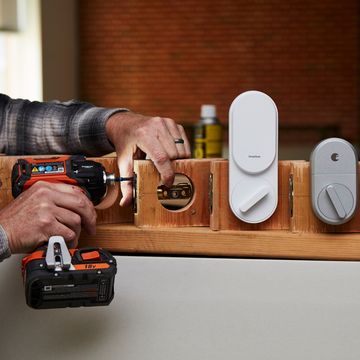Seventy-five years ago today, workers completed one of the greatest sculptural feats of the 20th century—four faces, etched in granite, forming the national icon known as Mount Rushmore. These 60-foot-tall presidential mugs, which took 14 years to make, are an incredible engineering achievement even today.
South Dakota historian Doane Robinson was the brains behind this enormous sculpture that now draws more than 2 million tourists to his home state. However, the original faces weren't going to be presidents at all, but rather Western heroes like Buffalo Bill Cody and Red Cloud. But sculptor Gutzon Borglum—who Robinson picked for the project—believed such an immense work should have a more national appeal. Borglum also thought the magma-formed batholith known as Mount Rushmore in South Dakota's Black Hills provided the perfect stone canvas.
"Borglum liked what he saw on the mountain," says National Park ranger and Mount Rushmore expert Marvin Achtenberg, "a good piece of granite that would withstand the test of time."
In 1927, Borglum and his team began constructing the monument, starting with several years of dynamiting. They blew up more than 450,000 tons of rock before even beginning to carve. Only then did they start chiseling the features that would become the heads of George Washington, Thomas Jefferson, Theodore Roosevelt, and Abraham Lincoln using a combined method of facing bits and jackhammers. Several decades later, many of the mechanics that went into creating such a colossal piece are still being used today, most notably on the carving of nearby Crazy Horse Memorial.
One method in particular—the pointing system—dates as far back as the ancient Greeks and Egyptians. Borglum and his team used this three-point method to help achieve Mount Rushmore's lifelike appearance. Basically, an inch on Rushmore's scale model equalled a foot on the sculpture, so workers simply multiplied everything by 12. They then used a disk marked off in degrees like a protractor with a horizontal beam sticking out from its central axis. They'd position the disk at the top of a president's head, and from it the pivoting beam would measure the horizontal distance to the point Borglum and his workers were looking to pinpoint. From that beam they'd drop down a plumb bob to measure the vertical distance.
This is where the facing bits and jackhammers came into play. Workers used a series of air compressors situated at the base of the mountain to operate the jackhammers, and connected them through an 1,800-foot, 30-inch pipeline that ran parallel to the mountain's 506-step stairway. Since carving Mt. Rushmore was a year-round endeavor, workers dispensed a misty gas into the pipeline to keep the jackhammers running in cold weather.
But Borglum and his team also had their fair share of problems, especially with the rock's natural cracks and crevasses. "The best example came as Borglum was carving Jefferson's face," says Achtenberg. "He ran into a crack that would be going right through his nose. Rather than leave it so visible, Borglum shifted the president's head slightly toward the left and up a little bit, which put the crack along his cheek. You can still see it cutting down across his right eye."
Because the federal government footed most of the $900,000 bill for Rushmore's construction, the project had money problems once WWII started and diverted money to the war effort. Then Borglum died in March 1941, and his son Lincoln took over the project—adding a few finishing touches before declaring the sculpture complete on October 31, 1941.
But even then the work wasn't done. In fact, it's never stopped. Constant upkeep is vital to the sculpture's survival. "In the past workers used a mix of linseed oil and white lead to fill Rushmore's cracks and seal them," says Achtenberg. "But it dries out rather quickly. In the late 80s or early 90s, the National Park Service switched over to a silicon-based caulking material...like something you would use on a house. This lasts much longer."
While keeping track of its cracks and fissures once required workers to scale Mount Rushmore annually, Achtenberg says they now have strain gauges across some of the cracks that transmit that info down the mountain. The NPS is also in the process of upgrading this equipment, replacing its original copper wire strain gauges with fiberoptic lines.
Despite these advances in maintaining Mount Rushmore, Achtenberg believes a modern sculptor would use close to the same techniques that Borglum used all those years ago. "Probably the biggest change would be the use of modern drills connected to machinery," he says, "machines are also more precise and can control accuracy to a better degree than humans."
But it's a human touch that's essential for every great sculpture, and Mount Rushmore is no exception. It's why for the past 75 years, the number of visitors to this isolated little area in South Dakota has only grown.
